The relevant physics here is the LC tank formed by the secondary coil, where the capacitor is the 'stray' or 'parasitic' capacitance. The feedback from the secondary coil provides feedback to the remainder of the circuit, which only exists to drive the tank resonantly.
To fully understand this, we must note that the other side of the secondary 'capacitor' is effectively connected to ground - however, the completion of the LC tank runs through the B-C path of transistor V1, or thorough R2. In the phase of the oscillation in which current runs down L2, it can pass through V1 with little resistance. This turns the transistor ON, increasing downwards current in L1.
π radians later in the oscillation, L2 tries to pull current from ground but may only do so via R2. This pulls the base of V1 negative, turning it off and allowing the current in L1 to fall. So long as L1 and L2 are mutually phased correctly, this creates an endless resonant drive of L2 oscillation.
However, the frequency itself depends only on the secondary L2 / parasitic cap tank. Calculating that parasitic capacitance is nontrivial, but it may be estimated in an order-of-magnitude sense from a sphere-to-plane formula as given in http://solar.physics.montana.edu/dana/ph519/sph_cap.pdf. I can't say much more without knowing the dimensions of your particular Slayer exciter.
